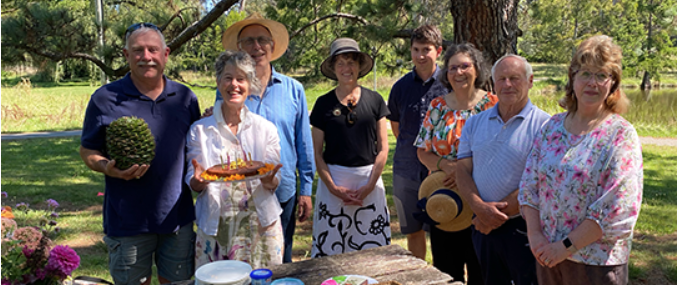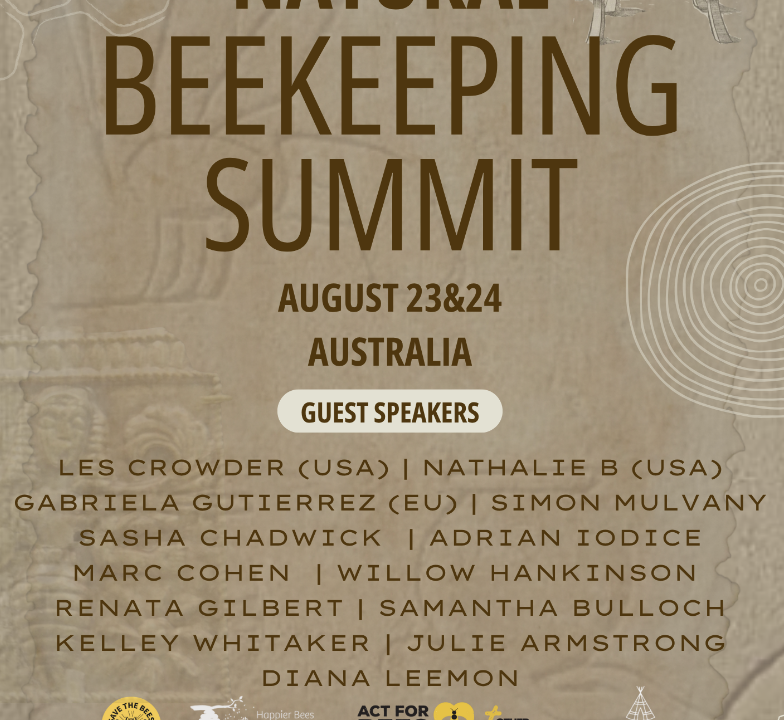
What’s buzzing with ACT for Bees?
February 13, 2024
World Bee Day events for healthy bees!
May 7, 2024April is now upon us and with it, the certainty of approaching cold nights and hopefully some sunny skies with the cooler days. It’s a good time to plant as the soil is still warm and the forecast is for above average temperatures for autumn. It’s also expected to be drier, so if you do plant shrubs or groundcovers for pollinators, remember to water!
Our summer was more humid and cooler than in years past with surprising impacts on honey bees and honey production. Our Vice President and apiarist, Mark Patterson, explains further.
Weather impact on bees and pollinators in Canberra
Let’s start with Albert Einstein’s statement that if the bees disappear, mankind will have four years left on this planet before we disappear.
What is happening to bees and pollinators as the weather changes?
I had the benefit of living in Canberra in the 1970s, then lived overseas for 24 years, returning in 2017. I went to two schools here before I moved away. I recall Christmas time back then, in the mid-40s C, when we had a Christmas lunch for the family as it was too hot to enjoy dinner. Now, at Christmas time, we have dinner, and when you go outside in the evening, you must wear a jacket as it’s cold. The weather in Canberra has changed a great deal in a short time.
If you recall, in the spring of last year, BOM predicted a hot and dry summer. Farmers destocked their farms in anticipation of this information. This did not happen; we had a cold and wet summer. In the past, our summers were hot and dry with no noticeable humidity. If you look at the trend, our summers continue to cool, and our winters are warming. In addition, we are receiving a good deal of rain, and now humidity is noticeable.
How have these changes impacted bees and pollinators? These changes are having a significant negative impact on them all. Bees make honey from nectar. They collect it from a flower, take it to the hive, and transfer it to a house bee, which adds some enzymes. The house bee deposits this nectar into a cell, and when the moisture content is reduced from around 80% down to 14-17% and the cell is full, it is capped. Now it’s honey.
Rain washes the nectar from the flowers, and bees cannot fly in it. Some plants renew their nectar in 20 minutes, and some take a full day. Days and weeks of rain can deeply impact honey production.
Pollinators have a considerable decline due primarily to human activities and weather changes. The decline does not have one single cause, but threats include land-use changes and high chemical input for agriculture or urbanisation.
I taught a bee-keeping course in February this year, and the class and I opened 15 hives, no new honey was found from this year. We found honey in cells that were 1 to 2 years old. You can tell it’s old honey as there were no white-capped cells of honey. The Canberra show did not have a honey competition this year.
What can you do to support bees and pollinators? First, buy your honey from a local beekeeper, make/buy a native bee hotel, and sign up for a beekeeping class. Add plants to your garden that support pollinators. Join ACT for Bees and Pollinators. Write to your local politician saying we need to protect bees and pollinators, we need sustainable agriculture, and we need to protect habitats for bees and pollinators.
Mark Patterson, Apiarist

Native Bees
The cooler weather has also meant that our native bees have had more limited feeding times. However, there have been plenty of sightings at the Australian National Botanical Gardens, where Julie was recently. You can watch the video on the Canberra Environment Centre YouTube channel. The video was produced in conjunction with the Canberra Environment Centre and with the assistance of the ACT Government under the ACT Community Zero Emissions Grants Program.
As mentioned in our February newsletter, we held a native bee hotel workshop in November 2023 and plan to hold more in spring this year. In anticipation, we wanted to share a picture of bees using the accommodation constructed during that workshop!

Canberra Nature Map Native Bees of Canberra Home Gardens Citizen Science project
This pilot research project on Native Bees in Canberra Home Gardens is part of a larger research project called Insect Pollinators of Canberra Home Gardens. It is being organised by Meredith Cosgrove (mcosgrove) and aims to better understand insect pollinators in Canberra’s home gardens.
Birthday Celebration
ACT for Bees + Other Pollinators celebrated our 10th birthday last month. What an amazing journey with so many unexpected successful outcomes. To learn more, go to our website About Us page
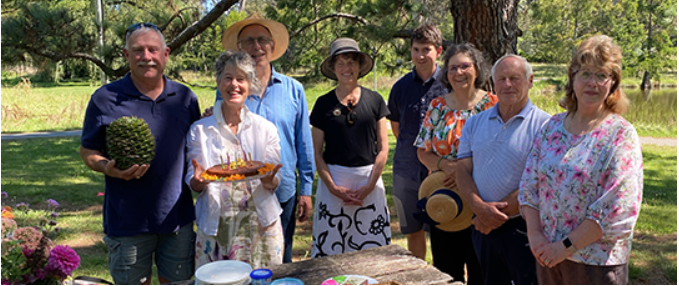
best wishes
Julie, Lynne, Mark, John, Vicki, Didi and Matt
ACT for Bees Management Committee
Save the Dates!
Ginninderry Sustainable Day
Sunday 21 April, 2024, 10:00am – 2:00pm
McClymont Way Strathnairn.
An opportunity to ask questions and engage with suppliers and experts on building a sustainable home. Also an opportunity to have a look around the development where ACT for Bees has been working for some time supporting plantings for pollinators.
World Bee Day will be buzzing!
17 – 20 May 2024 As foreshadowed in our February newsletter, World Bee Day is on 20 May 2024.We would love your school, university, and organisation to get involved by holding your own World Bee Day celebration on Monday, 20 May or attending various events in Canberra from Friday, 17 May, throughout the weekend to Monday, 20 May.We are very fortunate to have the diplomatic community’s input to our celebrations in Canberra and to have the opportunity to visit different embassies and hear how they are taking care of bees and pollinators in their grounds. This year, some diplomatic missions will share the EU focus on The UN’s Sustainable Development Goals with us. Further details will follow closer to May. Keep updated by following the World Bee Day Australia website.
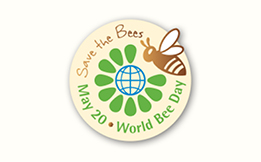
Interesting Links
ANU Citizen Science Project
Get involved in research conducted at the ANU on varroa mites to help save our honey bees. This citizen science project deserves our support.

Using Smart Hives

Another link on the varroa mites and technology is being trialled in the ACT to detect diseases in beehives.
https://the-riotact.com/smart-hives-the-latest-buzz-which-could-help-with-varroa-mite-detection-and-bee-health/750133
The 2023 ACT State of the Environment Report

The Report was tabled in the ACT Legislative Assembly on the 21st of March 2024. The report provides extensive commentary and analysis on the environment and progress with sustainability in the ACT. It contains many useful statistics and graphics, including this one on climate change on p 124.
ACT for Bees was asked to contribute to the report and our work with the ACT Government on amending the Municipal Infrastructure Standards to plant for pollinators is noted.
Insect Ecology and Conservation in Urban Areas: an overview of knowledge and needs
Catherine Matilda (Tilly) Collins, Helene Audusseau, Chris Hassall, Nusha Keyghobadi, Palatty Allesh Sinu, Manu E. Saunders
Conservation of insects in urban environments is a key global challenge. Little is known about insects’ ecology and diversity. This overview of research aims to understand which species thrive in urban environments and why.
Jennifer Jewell is an American gardener, writer and broadcaster who is particularly interested in the intersections between gardens, the native plant environment around them and human culture. Whilst her podcasts have a northern hemisphere focus, there’s much to learn from them. You can listen to her podcasts through either of the links below.
https://www.mynspr.org/people/jennifer-jewell
https://www.cultivatingplace.com/
Restor is a Swiss not-for-profit organisation that provides a platform to showcase private efforts in nature conservation and support the communities protecting and restoring nature. Whether you are a gardener or farmer, run a restoration project or manage global investments, with Restor you can contribute to the regenerative use of the land we depend on.
https://restor.eco/community/
A few interesting books……

What We Sow: On the personal, ecological and cultural significance of seeds
by Jennifer Jewell, Timber Press 2023
In October 2023, the respected economist Ross Gittins wrote an insightful piece on the Nine Planetary Boundaries – a framework developed in 2009 by a group of internationally renowned scientists, including the late Will Steffen of the ANU.
Basically, it says that there are key categories of environmental damage, and it estimates the point at which “the Earth system” can no longer recover. For a very readable discussion of the science involved, read Gittins’s article here, and if you’d like to delve further, go to the Stockholm Resilience Centre
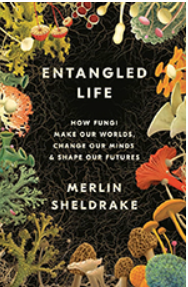
Entangled Life: How Fungi Make Our Worlds, Change Our Minds & Shape Our Futures: The Illustrated Edition
by Merlin Sheldrake, Penguin Random House, 2023.
First published in 2021, the original book was awarded both the Royal Society Science Book Prize and the Wainwright Prize for Conservation Writing. This edition has sumptuous photographs and an abridged text.
Books for younger readers

The Beehive
by Megan Daley and Max Waker, Walker Books, 2024
An amazing look into the native stingless bee, the heroes of pollination, from celebrated teacher librarian and author Megan Daley and CBCA Award-winning illustrator Maxine Hamilton.
Lots of amazing facts delivered through an engaging story.
Suitable for ages 5+
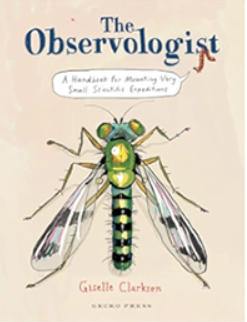
The Observologist
by Giselle Clarkson, Gecko Press, 2023
Giselle Clarkson is an illustrator and comic artist based in New Zealand. She is known for her non-fiction comics on conservation and environmental topics and has illustrated a number of award-winning books. Clarkson received the prestigious Mallinson Rendel Illustrators Award in 2023.
“The Observologist” was rated as one of the best children’s books of 2023 in both the UK and New Zealand.
Suitable for all ages.
| ACKNOWLEDGEMENT OF COUNTRY We respectfully acknowledge the Traditional Custodians of the land on which we live and work, the Ngunnawal and Ngambri people. We pay our respects to their Elders, past, present and emerging.We recognise the impact of climate change and increasing urbanisation on biodiversity. It is now even more important for us to plant and maintain our urban gardens and parklands to protect our bees, butterflies, birds and local wildlife. Go to actforbees.org for more information. |
| What We Sow: On the personal, ecological and cultural significance of seeds by Jennifer Jewell, Timber Press 2023 In October 2023, the respected economist Ross Gittins wrote an insightful piece on the Nine Planetary Boundaries – a framework developed in 2009 by a group of internationally renowned scientists, including the late Will Steffen of the ANU. Basically, it says that there are key categories of environmental damage, and it estimates the point at which “the Earth system” can no longer recover. For a very readable discussion of the science involved, read Gittins’s article here, and if you’d like to delve further, go to the Stockholm Resilience Centre |

